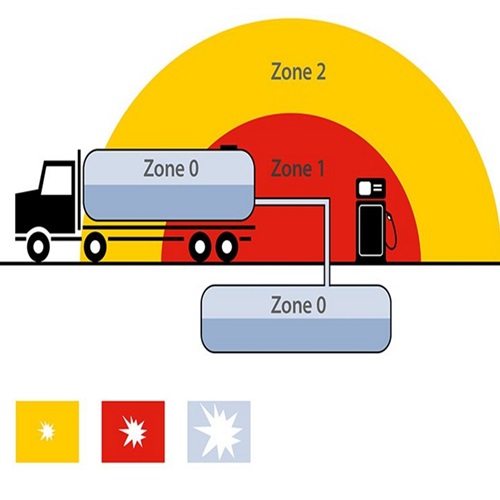Hazardous zones
|
Relevant Product Category
|
Type of Explosive Atmosphere
|
The conditions of explosive environments based on frequency of occurrence and duration of its formation
|
Zone 0
|
category 1
|
Gas
|
An explosive atmosphere where flammable gas is continuously, or for long periods, or repeatedly presents.
|
Zone 20
|
category 1
and/or
category M1 / M2
|
dust
|
An explosive atmosphere where flammable dust in the form of a dust cloud exists continuously, for long periods, or repeatedly in the air.
|
Zone 1
|
category 2
|
Gas
|
An explosive atmosphere likely to result from the normal activity of an explosive gas atmosphere
|
Zone 21
|
category 2
and/or
category M1 / M2
|
dust
|
An explosive atmosphere in which an explosive dust atmosphere in the form of a cloud of dust in the air, is likely to occur in normal operation from time to time (occasionally).
|
Zone 2
|
category 3
|
Gas
|
An explosive atmosphere where an explosive gas atmosphere not expected most likely to occur during normal operations, but if it does occur, it will exist only for a short period.
|
Zone 22
|
category 3
and/or
category M1 / M2
|
dust
|
An explosive atmosphere in which an explosive dust atmosphere is created in the form of a cloud of combustible dust in the air and is unlikely to occur in normal operation, but if it occur, it will continue only for a short time.
|


